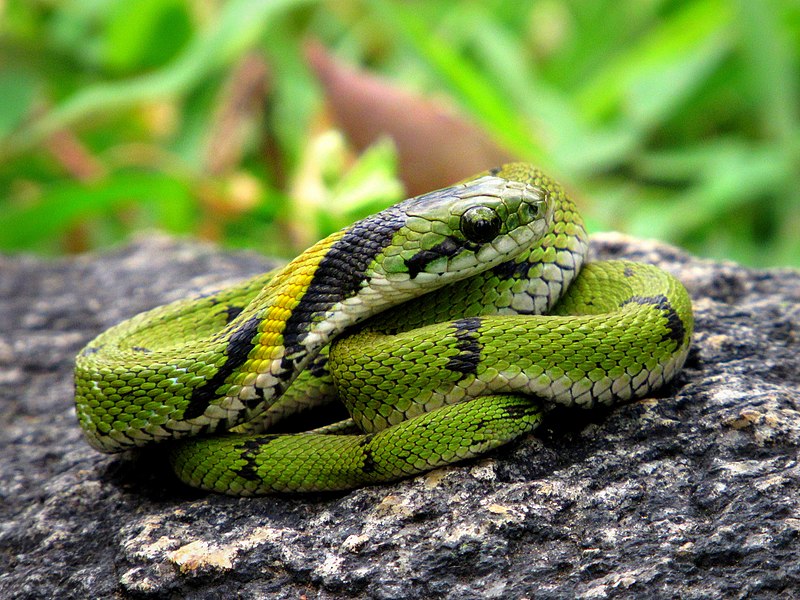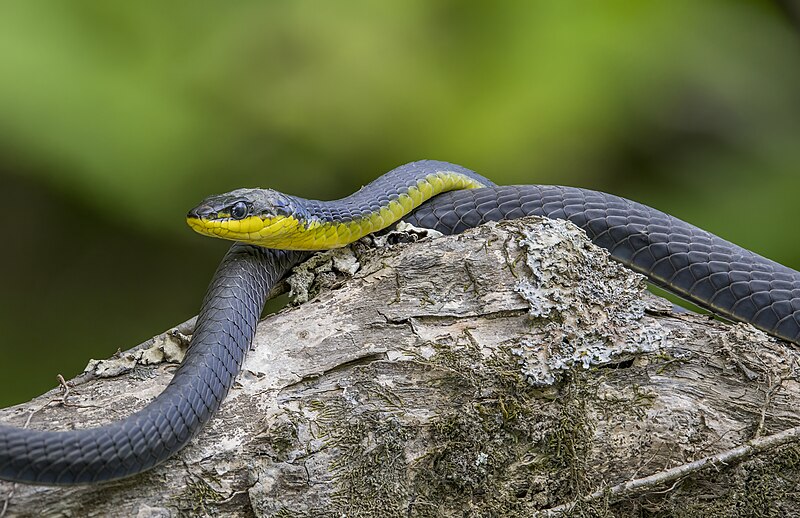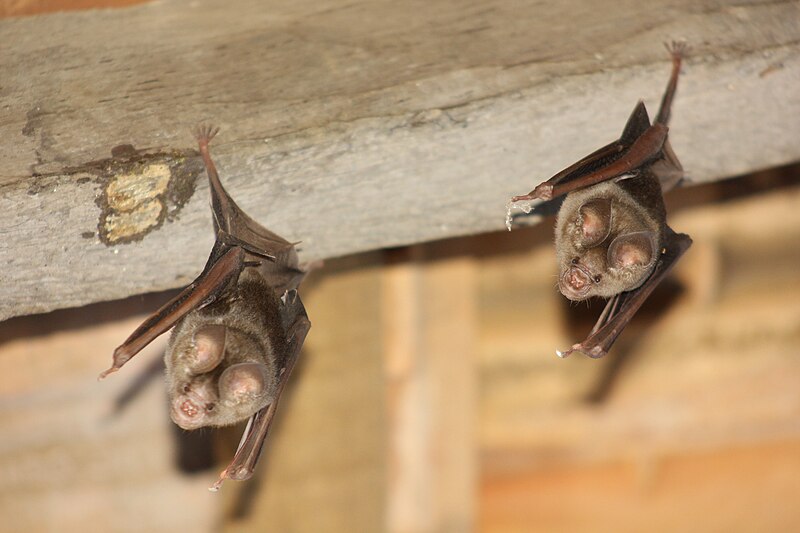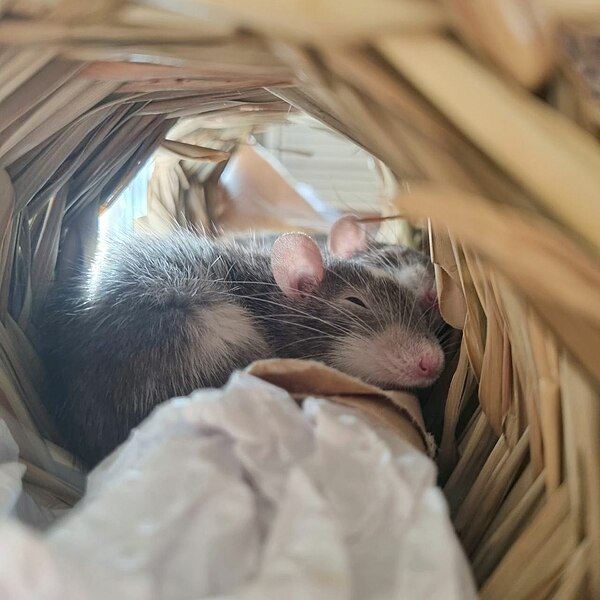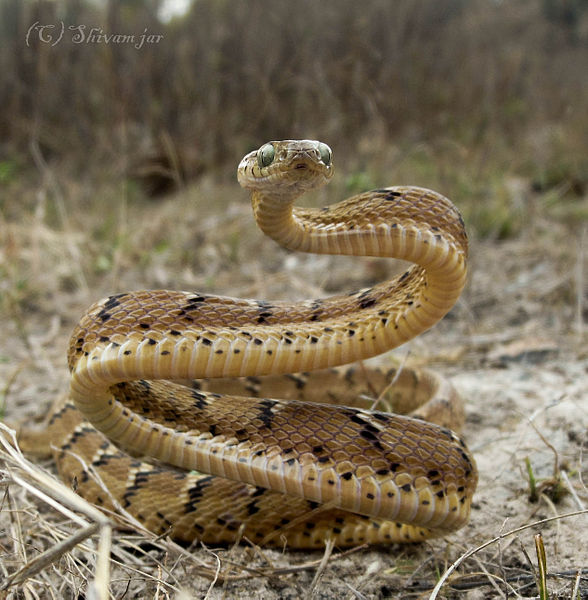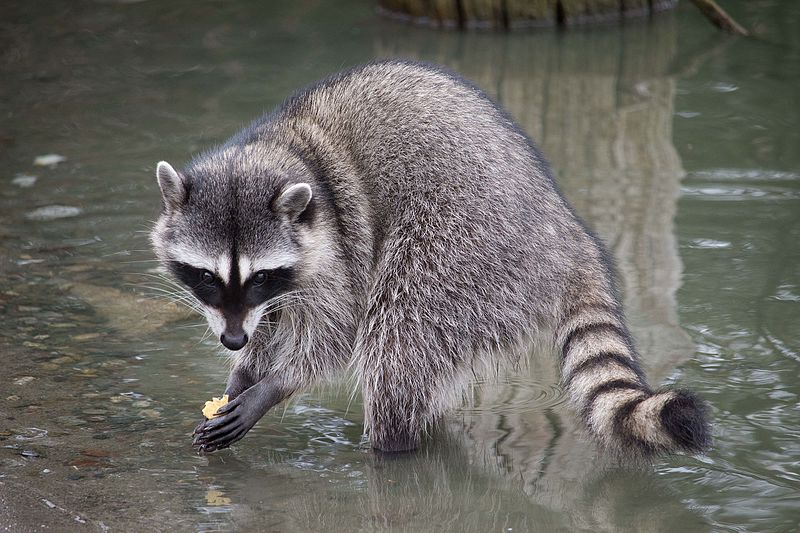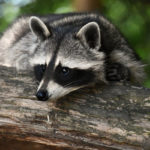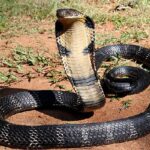
- Brian Moss (President)
- AAAC Wildlife Removal
11/28/2022 Total words : 2092
What Kind of Animal Is a Snake? Exploring Reptile Classification
A snake is a legless, elongated reptile belonging to the suborder Serpentes. They are characterized by their flexible bodies, lack of eyelids, and carnivorous diet. Key Takeaways Snakes play an essential role in the natural world, contributing to the complexity and beauty of nature. They possess unique physical characteristics and diverse behaviors, thriving in widespread habitats. Snakes fulfill crucial ecological functions, maintaining balance in ecosystems. Understanding and appreciating snakes can dispel common myths and misconceptions, fostering respect for these reptiles. Recognizing the importance of snakes is vital for their conservation and the health of our ecosystems. Protecting snake populations helps preserve biodiversity and supports ecological stability. Imagine walking through a dense forest, when suddenly you hear a rustling sound from the underbrush. You freeze, and a sleek, scaly creature slithers by, almost silently. This encounter might send shivers down your spine or spark a sense of wonder. But what exactly is this fascinating creature? It's a snake, a reptile that has captured human curiosity for centuries. At AAAC Wildlife Removal, we encounter snakes regularly as part of our work, and we understand both the fear and the fascination they inspire. Snakes are some of the most misunderstood and intriguing animals on the planet. From their unique way of moving to their extraordinary hunting techniques, snakes have evolved to thrive in a variety of environments. But what kind of animal is a snake, really? In this article, we'll explore the biological classification, physical characteristics, behaviors, and ecological significance of snakes. Whether you're a student working on a school project, a teacher looking for reliable information, or simply someone curious about these remarkable reptiles, you'll find everything you need to know about snakes right here. So, let's dive into the world of snakes and uncover the secrets of these enigmatic creatures with the expert insights from AAAC Wildlife Removal. What Are Snakes? Snakes are fascinating creatures that belong to the class Reptilia, making them reptiles. Within this class, snakes are part of the order Squamata, which also includes lizards. They fall under the suborder Serpentes, which distinguishes them from their legged cousins. Snakes are vertebrates, meaning they have a backbone, although it is highly flexible, allowing them to move in their characteristic slithering motion. Biologically, snakes are known for their elongated, limbless bodies and covered in scales. These scales are made of keratin, the same protein that human fingernails and hair are composed of. The scales serve various functions, including protection, reducing friction as they move, and aiding in moisture retention. Snakes are ectothermic, or cold-blooded, which means they rely on external sources to regulate their body temperature. Snakes are found on every continent except Antarctica, and they have adapted to a wide range of habitats, from deserts and forests to oceans and wetlands. This adaptability has allowed them to become one of the most diverse groups of reptiles, with over 3,000 species identified so far. Physical Characteristics The physical structure of a snake is uniquely adapted to its lifestyle. One of the most notable features of a snake is its elongated body, which houses a complex and efficient internal system. Despite lacking limbs, snakes possess a highly developed muscular system that allows them to move efficiently. They can climb trees, swim, and burrow, showcasing their incredible versatility. A snake's head is equipped with several specialized organs. Their eyes, although lidless, are covered with a transparent scale called a spectacle, which protects them while maintaining vision. Most snakes have poor eyesight, relying instead on their keen sense of smell and vibration detection to navigate their environment. They use their forked tongues to collect scent particles from the air and transfer them to the Jacobson's organ, a sensory receptor located on the roof of their mouth, providing them with detailed information about their surroundings. Another distinctive feature is their skin, which they shed periodically in a process known as ecdysis. This process not only allows for growth but also helps remove parasites and old skin. The frequency of shedding varies depending on the snake's age, species, and environmental factors. Internally, snakes are just as fascinating. Their jaws are highly flexible, thanks to a special ligament that connects the two halves of their lower jaw, allowing them to consume prey much larger than their head. This adaptability in feeding is complemented by their specialized teeth, which can include fangs that deliver venom in venomous species. Venom is a powerful adaptation used for subduing prey and defending against predators. Understanding these physical characteristics helps us appreciate how snakes have evolved to become efficient predators and survivors in a wide array of environments. Their unique adaptations not only set them apart from other reptiles but also make them a vital part of the ecosystems they inhabit. Behavior and Habits Snakes exhibit a wide range of behaviors and habits that are perfectly adapted to their environments and lifestyles. One of the most intriguing aspects of snake behavior is their mode of locomotion. Despite lacking limbs, snakes have developed several unique ways of moving. They can slither in a straight line using a method called rectilinear locomotion, move side-to-side in a sinuous motion known as lateral undulation, or even perform a concertina motion, which is useful for climbing. Some species, like the sidewinder, have specialized forms of movement suited to their environments, such as sandy deserts. Feeding behavior in snakes is equally fascinating. Most snakes are carnivorous and have evolved various methods for capturing and consuming prey. Constrictors, like boas and pythons, wrap their bodies around their prey and squeeze until the prey suffocates. Venomous snakes, such as vipers and cobras, inject venom through their fangs to immobilize or kill their prey before swallowing it whole. Their flexible jaws and stretchy skin allow them to consume prey items that are significantly larger than their head. Reproduction in snakes can vary widely between species. Some lay eggs (oviparous), while others give birth to live young (viviparous). Oviparous species lay their eggs in secure environments where they can incubate until hatching. Viviparous snakes, on the other hand, carry the developing embryos inside their bodies and give birth to fully-formed young. Mating behaviors can include intricate courtship rituals, with males often competing for the attention of females. Snakes are also known for their ability to remain undetected, thanks to their cryptic coloration and stealthy movements. This camouflage helps them avoid predators and ambush prey effectively. Despite their solitary nature, some species exhibit interesting social behaviors, such as communal nesting or hibernation, where multiple snakes share a den during colder months. Ecological Role Snakes play a crucial role in maintaining the balance of ecosystems around the world. As both predators and prey, they are integral to the food web. Snakes help control the populations of their prey, which primarily includes rodents, birds, insects, and other small animals. This predation helps prevent overpopulation of these species, which can lead to crop damage and the spread of diseases. In turn, snakes are prey for a variety of larger animals, including birds of prey, mammals, and other reptiles. This makes them a vital food source for these predators and contributes to the biodiversity of the ecosystem. The presence of snakes can be an indicator of a healthy environment, as they are sensitive to changes in habitat and pollution levels. Snakes also contribute to their ecosystems through their interactions with the soil and plant life. For example, burrowing snakes help aerate the soil, promoting healthy plant growth. Some species of snakes are involved in seed dispersal, either directly or indirectly, by consuming prey that has ingested seeds. Moreover, snakes have a significant impact on controlling pest populations, especially rodents, which are notorious for damaging crops and stored food supplies. By keeping these populations in check, snakes provide an essential service to both natural and agricultural ecosystems. Despite their often fearsome reputation, snakes are generally not aggressive towards humans unless provoked. Their ecological benefits far outweigh the risks they pose. Understanding and appreciating the role of snakes in the environment can help foster a more balanced perspective and encourage conservation efforts. Common Misconceptions Snakes are often surrounded by myths and misconceptions that contribute to their undeserved negative reputation. Let's address some of these common misunderstandings and replace them with facts. All snakes are dangerous and aggressive The majority of snake species are non-venomous and pose no threat to humans. Even venomous snakes are generally shy and will avoid confrontation if given the chance. Bites usually occur only when snakes are threatened or provoked. Snakes are slimy Snakes are covered in dry scales made of keratin, the same material as human fingernails. Their skin is smooth and dry, not slimy. Snakes can hypnotize their prey This myth likely arises from the fixed gaze of a snake. Snakes do not possess the ability to hypnotize; their unblinking stare is due to the lack of eyelids. Snakes chase humans Snakes do not chase humans. If a snake moves toward a person, it is often trying to escape to safety, not attack. Most snakes prefer to flee when encountered. Venomous snakes are easy to identify by their appearance Identifying venomous snakes based on appearance alone can be misleading, as many non-venomous snakes mimic the coloration and patterns of venomous species. It's important to avoid handling any wild snake unless you are certain of its identity and trained to do so. Habitat and Distribution Snakes are incredibly versatile and can be found in a wide variety of habitats across the globe. Their adaptability to different environments has contributed to their widespread distribution, making them one of the most successful groups of reptiles. From arid deserts to lush rainforests, and from high mountain ranges to the depths of the ocean, snakes have managed to carve out niches in almost every ecosystem. In deserts, snakes such as the sidewinder and the rattlesnake have adapted to the extreme heat and scarcity of water. These snakes often burrow to escape the harsh daytime temperatures and emerge at night to hunt. Their coloration helps them blend into the sandy landscape, providing both camouflage from predators and an advantage in ambushing prey. Forest-dwelling snakes, like the green tree python and the king cobra, thrive in the dense foliage and complex structures of their habitats. These snakes are excellent climbers, using their prehensile tails and strong muscles to navigate trees and shrubs. Their vibrant colors often help them blend into the foliage, making them nearly invisible to both prey and predators. In aquatic environments, snakes such as the anaconda and the sea snake have evolved to live in or around water. Anacondas are found in swamps and rivers, where their powerful bodies and swimming abilities make them formidable hunters. Sea snakes, on the other hand, are fully adapted to life in the ocean, with paddle-like tails for swimming and specialized glands for excreting salt. Snakes are also found in temperate regions, where they must contend with seasonal changes in temperature. Many temperate snakes, such as garter snakes and adders, hibernate during the winter months in underground burrows or communal dens to survive the cold. Globally, snakes are distributed across every continent except Antarctica. This wide distribution is a testament to their remarkable adaptability and evolutionary success. Understanding the diverse habitats and distribution of snakes helps us appreciate their role in ecosystems worldwide and the various adaptations that have enabled them to thrive in such a wide range of environments. Conclusion Snakes are remarkable creatures that play an essential role in the natural world. From their unique physical characteristics and diverse behaviors to their widespread habitats and crucial ecological functions, snakes are a testament to the complexity and beauty of nature. While they often evoke fear and misunderstanding, a deeper knowledge of snakes reveals their true importance and the benefits they bring to ecosystems. At AAAC Wildlife Removal, we encounter snakes regularly and understand the balance they maintain in our environment. By dispelling common myths and misconceptions, we hope to foster a greater appreciation for these fascinating reptiles. Whether you're a student, educator, or simply curious about nature, understanding what kind of animal a snake is can enhance your awareness and respect for the natural world. As we continue to learn more about snakes, it is crucial to recognize their value and advocate for their conservation. Protecting snake populations not only preserves biodiversity but also supports the health of our ecosystems. So the next time you hear a rustle in the underbrush or catch a glimpse of a slithering shape, remember the vital role these enigmatic creatures play in the tapestry of life.
Snakes That Eat Rattlesnakes: The Unexpected Predators
Yes, some snakes do eat rattlesnakes, and they're surprisingly good at it. Imagine a world where rattlesnakes aren’t at the top of the food chain. Sounds wild, right? Well, grab your hiking boots and your sense of wonder because we’re about to dive into a fascinating corner of the natural world where rattlesnakes have to watch their backs. Yes, you read that correctly – there are actually snakes that hunt and eat rattlesnakes! From the crafty kingsnake to the imposing indigo snake, these unexpected predators are more than just survivors – they’re the ultimate disruptors in the snake hierarchy. These fearless hunters possess unique adaptations that make them exceptionally good at taking down one of nature’s most feared reptiles. Key Takeaways: Some snakes are natural predators of rattlesnakes. These snakes have unique adaptations that make them effective hunters. Understanding this predator-prey relationship sheds light on the complex dynamics of ecosystems. Meet the Kingsnake Let’s kick things off with one of the most well-known rattlesnake predators: the kingsnake. With a name that practically screams royalty, the kingsnake truly lives up to its title. These impressive serpents come in a variety of colors and patterns, but they all share one common trait – their fearlessness in the face of rattlesnakes. Description and Characteristics Kingsnakes are medium to large-sized snakes, typically measuring between 3 to 6 feet in length. They boast a variety of striking patterns, from black and white bands to vibrant reds and yellows, depending on the species. Their shiny, smooth scales make them easily recognizable and quite the spectacle in the wild. Hunting Behavior What makes the kingsnake a formidable predator is its technique. When hunting rattlesnakes, the kingsnake employs a method known as constriction. This involves wrapping its muscular body around the rattlesnake and squeezing until its prey is subdued. But wait, there’s more! Kingsnakes are immune to rattlesnake venom, which means they can take a few bites without flinching, making them practically invincible in this epic showdown. Adaptations for Preying on Rattlesnakes Kingsnakes have evolved several fascinating adaptations that make them adept at hunting rattlesnakes. Their immunity to venom is the most notable, but they also have strong, flexible jaws that allow them to swallow their prey whole. Plus, their keen sense of smell helps them track down rattlesnakes with precision. Fun Fact Did you know that kingsnakes get their name not just because they are the "kings" of their domain, but also because they can overpower and eat other snakes, including venomous ones? It’s a royal title well-deserved! With their impressive hunting skills and natural immunity to venom, kingsnakes are the ultimate underdog heroes of the snake world. Stay tuned as we introduce you to another fascinating rattlesnake predator – the indigo snake. The Fearless Indigo Snake Next up in our lineup of rattlesnake predators is the magnificent indigo snake. These glossy, iridescent serpents are not just stunning to look at but are also incredibly effective hunters. Let's delve into what makes the indigo snake such a formidable foe for rattlesnakes. Description and Characteristics Indigo snakes are among the largest snakes in North America, with some individuals growing up to 8 feet in length. Their scales are a deep, shiny blue-black that glisten with a rainbow-like sheen when caught in the light, making them one of the most beautiful snakes in the wild. Despite their impressive size and striking appearance, indigo snakes are non-venomous and pose no threat to humans. Habitat and Range Indigo snakes prefer a variety of habitats, including pine flatwoods, hardwood forests, and coastal dunes. They are primarily found in the southeastern United States, with their range extending from Florida up to parts of Georgia and South Carolina. These snakes are known for their extensive home ranges and are often on the move, which increases their chances of encountering prey, including rattlesnakes. How It Hunts Rattlesnakes Unlike the kingsnake, the indigo snake doesn't use constriction to subdue its prey. Instead, it relies on its sheer strength and size to overpower rattlesnakes. Indigo snakes are known to grab rattlesnakes by the head and thrash them against the ground, a method that quickly immobilizes their prey. Their tough, scaly skin provides some protection against bites, and their speed and agility allow them to avoid serious injury. Fun Fact Indigo snakes are often seen sharing burrows with gopher tortoises, a behavior that benefits both species. The burrows provide a safe retreat for the indigo snake and help the gopher tortoise by keeping their shared home free of pests. With their impressive size, striking beauty, and fearless hunting techniques, indigo snakes are truly remarkable predators. But our exploration doesn’t end here – let’s meet another surprising snake that preys on rattlesnakes: the bullsnake. The Surprising Bullsnake Last but certainly not least, let’s get to know the bullsnake, a predator that might just surprise you with its rattlesnake-hunting prowess. These hefty serpents are not only skilled hunters but also masters of disguise, able to mimic their venomous cousins to perfection. Description and Characteristics Bullsnakes are among the largest snakes in North America, often reaching lengths of up to 8 feet. Their coloration is typically yellowish with brown, black, or reddish blotches running down their backs, giving them a somewhat rattlesnake-like appearance. This visual similarity is no coincidence – it’s part of their survival strategy. Diet and Hunting Techniques Bullsnakes are opportunistic feeders with a diet that includes small mammals, birds, and, you guessed it, other snakes. When it comes to rattlesnakes, bullsnakes use their impressive size and strength to overpower their prey. They’re constrictors, meaning they wrap their muscular bodies around their prey and squeeze until it can no longer breathe. This method is highly effective, even against the venomous bite of a rattlesnake. Interaction with Rattlesnakes Bullsnakes have developed a fascinating behavioral adaptation – they can mimic the sound of a rattlesnake’s rattle by vibrating their tails against dry leaves or other debris. This clever mimicry can deter predators, but it also serves to confuse and intimidate rattlesnakes. By sounding like a rattlesnake, bullsnakes can bluff their way out of potentially dangerous encounters or gain the upper hand when hunting. Fun Fact Bullsnakes are known for their hiss, one of the loudest and most intimidating in the snake world. This impressive hiss, combined with their rattlesnake mimicry, makes them masters of deception in the animal kingdom. With their size, strength, and cunning mimicry, bullsnakes are truly fascinating predators that keep rattlesnakes on their toes. Their unique adaptations and hunting strategies highlight the incredible diversity and ingenuity found in nature. Conclusion So there you have it – a glimpse into the thrilling and unexpected world of snakes that eat rattlesnakes. From the immune and mighty kingsnake to the bold and beautiful indigo snake, and the cunning and deceptive bullsnake, these predators showcase the incredible diversity and adaptability of nature's hunters. Recap of the Key Points Kingsnakes: Immune to rattlesnake venom and skilled constrictors. Indigo Snakes: Large, powerful, and capable of overpowering rattlesnakes with sheer strength. Bullsnakes: Masters of mimicry and deception, using their size and cunning to hunt rattlesnakes. Reflecting on these predator-prey relationships reminds us of the intricate and dynamic balance within ecosystems. Each snake species plays a vital role, not only in controlling rattlesnake populations but also in maintaining the health and stability of their environments. Their unique adaptations and behaviors highlight the ingenuity and resilience of wildlife. So, next time you think of rattlesnakes as the ultimate reptilian rulers, remember there are others out there who challenge that throne. These fearless hunters add a layer of complexity and wonder to the natural world, proving that even the fiercest predators have their own predators to contend with.

- Brian Moss (President)
- AAAC Wildlife Removal
11/28/2022
Total words : 1281
Do Bats Carry HIV? Exploring the Virus-Host Connection
No, bats do not carry HIV. Hey there, curious reader! You might have stumbled upon some wild rumors and spooky stories about bats and their association with HIV. Well, let's clear the air right away: bats do not carry HIV. It's a myth that has caused unnecessary fear and confusion, so let's debunk it once and for all. Understanding the relationship between wildlife and diseases is crucial, especially in today's world where zoonotic diseases (those that can jump from animals to humans) are a hot topic. Bats, in particular, often get a bad rap when it comes to viruses. However, while they are fascinating creatures with their own set of viral friends, HIV isn't one of them. In this article, we’ll dive into the world of bats and viruses, bust some myths, and provide you with accurate information. So, buckle up and get ready to learn something new – and maybe even develop a newfound respect for our nocturnal, winged friends! Key Takeaways Bats are not carriers of HIV. HIV is specific to humans and some primates. Bats can carry other viruses, but not HIV. Understanding zoonotic diseases is crucial for public health. Understanding HIV Alright, let's start with the basics. HIV, or Human Immunodeficiency Virus, is a virus that specifically targets the human immune system. It's the virus responsible for AIDS (Acquired Immunodeficiency Syndrome), a condition that severely weakens the body's ability to fight off infections and diseases. What is HIV? HIV is a retrovirus, which means it inserts its genetic material into the host's DNA, using the host's cellular machinery to replicate. This virus primarily attacks CD4 cells, a type of white blood cell that's crucial for immune function. Over time, as HIV destroys more CD4 cells, the immune system becomes increasingly compromised, leading to AIDS if left untreated. Origins of HIV HIV has its origins in simian immunodeficiency virus (SIV), which is found in chimpanzees and some other primates. The virus crossed over to humans, most likely through hunting and consumption of bushmeat, leading to the emergence of HIV in humans. This process is known as zoonosis, where a disease jumps from animals to humans. How is HIV Transmitted? HIV is transmitted through certain body fluids: blood, semen, vaginal fluids, rectal fluids, and breast milk. The most common ways HIV spreads are through unprotected sexual contact, sharing needles, and from mother to child during birth or breastfeeding. It's important to note that casual contact, like hugging, shaking hands, or sharing food, does not spread HIV. Why is HIV Specific to Humans and Some Primates? HIV is highly specific to humans and certain primates due to the way it interacts with the host's cells. The virus has evolved to exploit specific receptors on human CD4 cells, a process that doesn't easily translate to other species. This specificity is why, despite many animals being carriers of various viruses, they don't carry HIV. Bats and Viruses Now that we've covered the essentials about HIV, let's talk about bats and their intriguing relationship with viruses. Bats are often in the spotlight when it comes to discussions about zoonotic diseases, and for good reason. These nocturnal creatures have some unique characteristics that make them noteworthy in the study of viruses. Types of Viruses Bats Can Carry Bats are known to be reservoirs for a variety of viruses. Some of the most notable include: Rabies: Perhaps the most well-known, rabies is a deadly virus that can be transmitted to humans and other animals through bites or scratches. Coronaviruses: This family of viruses includes some that have caused significant human outbreaks, such as SARS, MERS, and the novel coronavirus responsible for COVID-19. Ebola and Marburg viruses: These are filoviruses that cause severe hemorrhagic fevers with high mortality rates. Nipah and Hendra viruses: These paramyxoviruses can cause severe disease in both animals and humans, often with high fatality rates. Why Are Bats Often Linked to Viral Outbreaks? Bats have several unique traits that make them effective carriers of viruses: High Mobility: Bats can travel long distances, spreading viruses across wide areas. Long Lifespan: Compared to other small mammals, bats have relatively long lifespans, providing more opportunities to harbor and transmit viruses. Social Behavior: Many bat species live in large colonies, facilitating the rapid spread of viruses among individuals. Immune System: Bats have a unique immune system that allows them to coexist with viruses that would be deadly to other animals. This ability helps them carry viruses without showing symptoms, acting as silent reservoirs. The Positive Side of Bats Despite their association with various viruses, bats play a crucial role in ecosystems: Pollination and Seed Dispersal: Many plants rely on bats for pollination and seed dispersal, which helps maintain biodiversity. Pest Control: Bats consume large quantities of insects, including pests that can damage crops, providing natural pest control. Myths and Facts About Bats and HIV Now, let's dive into the myths and facts surrounding bats and HIV. It's important to separate fiction from reality to foster a better understanding of these fascinating creatures and their relationship with diseases. Myth 1: Bats Carry HIV Fact: Bats do not carry HIV. HIV is a virus that specifically infects humans and certain primates. While bats are known to be reservoirs for many viruses, HIV is not one of them. This myth likely arises from confusion about the broad range of viruses bats can harbor. Myth 2: Bats Can Transmit HIV to Humans Fact: Since bats do not carry HIV, they cannot transmit it to humans. HIV transmission requires specific conditions involving human bodily fluids, such as through unprotected sex, sharing needles, or from mother to child during birth or breastfeeding. Simply put, there is no pathway for bats to transmit HIV to humans. Myth 3: All Viruses Carried by Bats Are Dangerous to Humans Fact: While bats do carry some viruses that can be dangerous to humans, not all bat-borne viruses pose a threat. Many viruses carried by bats are specific to them and do not have the capability to infect humans. It’s important to understand that bats have co-evolved with many of these viruses, often without any harm to themselves or humans. Myth 4: Avoiding Bats Completely is the Best Way to Prevent Viral Infections Fact: While it's wise to avoid direct contact with wild bats, especially if they appear sick or injured, completely avoiding them is neither practical nor necessary. Bats play vital roles in ecosystems, such as controlling insect populations and pollinating plants. Instead of avoidance, understanding and respecting wildlife, alongside practicing good hygiene and avoiding handling wild animals, are more effective strategies for preventing viral infections. Myth 5: Bat Populations Should be Culled to Prevent Disease Outbreaks Fact: Culling bat populations is not a scientifically supported method for preventing disease outbreaks. In fact, it can be counterproductive and ecologically damaging. Bats contribute significantly to biodiversity and ecosystem health. Effective disease prevention strategies include monitoring wildlife health, studying virus transmission pathways, and promoting human-wildlife coexistence. The Real Risks from Bats Alright, now that we've debunked the HIV myth, let's talk about what bats actually can carry. While bats don’t carry HIV, they are known to be reservoirs for other viruses. Understanding these real risks helps us take appropriate precautions without unnecessary fear. Diseases Bats Can Carry Rabies Transmission: Rabies is perhaps the most well-known disease associated with bats. It can be transmitted through bites or scratches from an infected bat. Prevention: Avoid handling bats and ensure pets are vaccinated against rabies. If you are bitten or scratched by a bat, seek medical attention immediately. Coronaviruses Transmission: Bats are natural hosts for many coronaviruses, some of which can spill over to humans and cause diseases. The most notable recent example is the SARS-CoV-2 virus, which causes COVID-19. However, direct transmission from bats to humans is rare and usually involves an intermediate host. Prevention: Maintain good hygiene practices, avoid contact with wild animals, and support efforts to monitor and control zoonotic diseases. Histoplasmosis Transmission: This is a fungal infection that can be contracted by inhaling spores from bat droppings (guano). It typically affects the lungs. Prevention: Avoid disturbing bat habitats, especially in caves or areas where guano accumulates. Wear protective gear if you must enter such environments. Preventative Measures to Avoid Risks Avoid Direct Contact: The simplest way to prevent transmission of diseases from bats is to avoid handling them. Bats are generally not aggressive, but they will defend themselves if they feel threatened. Vaccinations: Ensure pets are vaccinated against rabies and keep their vaccinations up to date. Protective Gear: If you work in environments where contact with bats or their droppings is possible, wear protective clothing, masks, and gloves. Seal Entry Points: Bats can enter buildings through small openings. Seal any gaps in your home to prevent them from roosting indoors. Educate and Inform: Raising awareness about the real risks and the ecological benefits of bats can help reduce fear and promote coexistence. Understanding and Respecting Bats Bats play a crucial role in our ecosystem. They help control insect populations, pollinate plants, and disperse seeds. Instead of fearing them, we should learn to respect and protect them while taking sensible precautions to minimize any health risks. By focusing on factual information and proper preventative measures, we can appreciate bats for the vital role they play in nature without falling for myths that cause unnecessary alarm. Let's continue to explore the amazing world of bats and their positive contributions to our environment. Fun Facts About Bats We've talked about the serious stuff, so now let's lighten things up with some fun and quirky facts about bats. These amazing creatures are full of surprises, and it's time to celebrate their unique qualities! Quirky and Interesting Bat Facts Diverse Species Huge Variety: There are over 1,400 species of bats, making them the second most diverse group of mammals after rodents. They can be found on every continent except Antarctica. Sizes and Shapes: Bats range in size from the tiny bumblebee bat, which weighs less than a penny, to the giant golden-crowned flying fox, with a wingspan of up to 5.6 feet! Echolocation Experts Nature's Sonar: Many bats use echolocation to navigate and find food in the dark. They emit high-frequency sounds that bounce off objects, allowing them to create a mental map of their surroundings. Precision Hunters: Echolocation is so precise that some bats can detect objects as thin as a human hair and catch insects in complete darkness. Social Creatures Colony Living: Bats are highly social and often live in large colonies. Some colonies can number in the millions, like the famous Bracken Cave colony in Texas. Communication: Bats have complex social structures and communicate using a variety of vocalizations and body language. They even have unique calls to identify themselves to others in their colony. Long Lifespans Surprisingly Long Lives: Despite their small size, bats can live surprisingly long lives. Some species can live over 30 years in the wild, with the oldest known bat reaching 41 years! Unique Feeding Habits Vampire Bats: While most bats are insectivores or frugivores, three species of vampire bats feed on blood. But don't worry—they usually prefer livestock and rarely bother humans. Special Diets: Other bats have unique diets too. The Mexican long-tongued bat, for instance, has a tongue that can extend to 1.5 times the length of its head to reach nectar deep inside flowers. Bat Myths and Legends Cultural Significance: Bats appear in myths and legends around the world. In Chinese culture, bats are symbols of good luck and happiness, while in Western folklore, they are often associated with vampires and Halloween. Environmental Indicators Health Checkers: Bats are considered bioindicators, meaning their presence and health reflect the overall health of the ecosystem. Monitoring bat populations can provide valuable information about environmental changes.

- Brian Moss (President)
- AAAC Wildlife Removal
11/28/2022
Total words : 1955
Rat vs. Mouse: Key Differences You Need to Know
Rats are larger and more aggressive, while mice are smaller and more curious. Ever found yourself squinting at a tiny intruder, wondering if you're dealing with Stuart Little or his bigger, badder cousin? Trust me, I've been there. It's like trying to tell apart identical twins at a distance – only these twins are furry, have whiskers, and might be raiding your pantry. Here's the thing: knowing whether you're facing off against a rat or a mouse isn't just about winning rodent trivia night at your local pub. It's crucial info that can help you protect your home, your health, and maybe even your sanity. These little critters might look similar at first glance, but they're as different as a Chihuahua and a Great Dane (okay, maybe not that extreme, but you get the idea). In this whisker-twitching adventure, we're going to dive into the nitty-gritty of rats versus mice. We'll explore everything from their size and looks to their sneaky behaviors and dining preferences. By the time we're done, you'll be a regular Sherlock Holmes of the rodent world, able to spot the difference between these furry felons faster than you can say "cheese!" Key Takeaways Rats are significantly larger than mice, with adult rats reaching up to 40cm in length Mice are more curious and likely to explore new objects, while rats are more cautious Rats have thicker, scaly tails, whereas mice have thin, hairy tails Mice have larger ears relative to their body size compared to rats Both can be pests, but rats generally cause more damage due to their size and strength Physical Differences When it comes to distinguishing between rats and mice, size definitely matters. These rodents may seem similar at first glance, but a closer look reveals some significant differences. Size Matters Rats are the giants of the rodent world, at least when compared to their smaller cousins. On average, a rat's body length ranges from 9 to 11 inches, and that’s not even including their tails! Mice, on the other hand, are much smaller, typically measuring about 3 to 4 inches in body length. So, if you spot a tiny, scurrying furball, it’s more likely a mouse than a rat. Tail Tale The tails of these critters are another giveaway. Rat tails are thick, scaly, and usually shorter relative to their body length. They’re strong and sturdy, perfect for balancing their larger bodies. In contrast, mouse tails are thin, long, and covered in a light fur. They have a more delicate appearance and are often nearly as long as their bodies. Face and Ears Take a closer look at their faces and ears, and you’ll notice more differences. Mice have a distinctly triangular face with large, prominent ears that make them look rather endearing (or at least less intimidating). Their eyes are relatively large for their size, giving them a more alert expression. Rats, however, have broader faces with smaller ears. Their eyes are smaller in proportion to their heads, which can give them a more serious or even menacing look. These physical characteristics are your first line of defense in identifying whether you’re dealing with a rat or a mouse. But there’s more to these rodents than just looks. Next, let’s explore their behavior and habitats to get a full picture of what makes each of them unique. Behavior and Habitat Understanding the behavior and habitat preferences of rats and mice can give you more insight into these little invaders. Despite their similarities, they have distinct habits and living environments. Home Sweet Home Rats and mice have different preferences when it comes to setting up their homes. Rats prefer basements, sewers, and burrows. They enjoy the dark, damp areas where they can stay hidden and safe from predators. You'll often find them in underground spaces, like burrows in the garden or the dark corners of basements and sewers. Mice, however, are more adaptable and can be found in various environments. They’re likely to be discovered in attics, walls, and cupboards. Mice are excellent climbers, so they can make their homes in higher places within your house. Their small size allows them to squeeze into tiny cracks and crevices, making them harder to find and catch. Behavioral Traits When it comes to personality, mice and rats differ significantly. Mice are naturally curious and adventurous. They explore new environments eagerly and are more likely to investigate new objects or food sources right away. This makes them easier to catch with traps, as they’ll quickly approach new bait. Rats, on the other hand, are more cautious and skeptical of changes in their environment. They often test new foods in small amounts before fully indulging, a behavior known as "neophobia." This caution makes them harder to trap and requires more strategic baiting techniques. Nocturnal Activities Both rats and mice are nocturnal, meaning they’re most active at night. However, the signs of their activity can help you determine which rodent you’re dealing with. Rats leave larger droppings, about 3/4 inch in length, and their gnaw marks are more significant due to their stronger teeth and bigger mouths. You might also hear louder scratching sounds if rats are present, thanks to their larger size. Mice, in contrast, leave smaller droppings, around 1/4 inch, and their gnaw marks are finer. The sounds they make are softer and less noticeable. If you hear faint scurrying and discover tiny droppings, it’s more likely you have a mouse problem. Knowing these behavioral differences can help you identify whether you’re dealing with rats or mice and determine the best course of action to address the issue. Now, let's move on to understanding their health and lifespan, so you can be fully informed about these creatures. Health and Lifespan When considering rats and mice, their health and lifespan are key factors that set them apart. Both rodents can affect human health, but their lifespans and specific health concerns differ. Living Longer Rats generally have a longer lifespan compared to mice. On average, rats live about 2 to 3 years, while mice have a shorter lifespan of about 1 to 2 years. This difference in longevity can influence how you approach managing or caring for these animals. If you’re considering one as a pet, a rat might be a longer-term commitment. Health Concerns Both rats and mice can pose health risks to humans, but the specific concerns vary. Rats are known carriers of more significant health risks, such as leptospirosis, a bacterial disease that can cause severe illness in humans. They can also spread rat-bite fever through bites or scratches, and their droppings can trigger allergies and asthma attacks. Mice, while smaller, are not without their own health risks. They can spread hantavirus, which can lead to severe respiratory illness in humans. Mice are also carriers of salmonella, a bacterium that can cause food poisoning. Additionally, their droppings and urine can contaminate food sources and surfaces, leading to potential health hazards. Reproduction Rates One of the biggest challenges with both rats and mice is their rapid reproduction rates. Mice tend to reproduce at a faster rate, with a single female capable of producing up to 10 litters per year, with each litter containing 6 to 12 offspring. This rapid breeding can lead to quick infestations if not managed properly. Rats, while also prolific breeders, have a slightly slower reproduction rate compared to mice. A female rat can produce about 5 to 10 litters per year, with each litter consisting of 5 to 12 pups. However, given their larger size and more significant impact on their environment, even a smaller number of rats can cause considerable problems. Understanding the health concerns and reproduction rates of rats and mice is crucial for effective management and prevention. Whether you’re dealing with an infestation or considering a rodent as a pet, being aware of these factors can help you make informed decisions. Impact on Human Environment Rats and mice, despite their small size, can have a significant impact on human environments. From property damage to health risks, understanding how these rodents affect our spaces can help in managing and preventing infestations. Signs of Infestation Knowing the signs of a rat or mouse infestation is the first step in addressing the problem. Rats leave behind larger droppings, about 3/4 inch in length, which are often found near food sources or nesting sites. You might also notice gnaw marks on wood, wires, or other materials due to their need to keep their teeth trimmed. Rats are also more likely to leave greasy smudge marks along walls and baseboards, as they follow the same paths repeatedly. Mice, on the other hand, leave smaller droppings, about 1/4 inch in length, which are often found scattered around their activity areas. Their gnaw marks are finer, and you may notice shredded paper or fabric, which they use to build nests. Mice are more curious and exploratory, so you might find their droppings and signs of activity in a wider range of locations. Damage Control Both rats and mice can cause significant damage to properties. Rats tend to cause more structural damage due to their size and stronger gnawing ability. They can chew through wood, plastic, and even some metals, potentially causing fires if they gnaw on electrical wires. Their burrowing behavior can undermine foundations and create holes in walls and floors. Mice, while less destructive than rats, can still cause plenty of damage. They are particularly notorious for contaminating food sources. A single mouse can contaminate much more food than it consumes, spreading bacteria and disease. Their nesting habits can also cause damage to insulation and other building materials. Health Risks Both rodents pose health risks, but the specifics can vary. As mentioned earlier, rats can carry diseases like leptospirosis and rat-bite fever, and their droppings can trigger allergies and asthma. Mice can spread hantavirus and salmonella, contaminating food and surfaces with their droppings and urine. Prevention Tips Preventing infestations of rats and mice involves a combination of cleanliness, exclusion, and monitoring. Here are some effective strategies: Seal Entry Points: Both rats and mice can squeeze through surprisingly small openings. Inspect your home for gaps, cracks, and holes, and seal them with steel wool, caulk, or metal mesh to prevent entry. Store Food Properly: Keep food in airtight containers and store it off the floor. Clean up spills and crumbs promptly to avoid attracting rodents. Maintain Cleanliness: Regularly clean your home, especially in areas where food is prepared and consumed. Reduce clutter where rodents can hide and nest. Remove Outdoor Attractants: Keep garbage bins sealed and dispose of waste regularly. Trim vegetation and remove debris near your home’s foundation to reduce hiding places for rodents. Use Traps and Bait Stations: Place traps and bait stations in areas where you’ve noticed rodent activity. Be sure to use them safely, especially around children and pets. Conclusion Now that you're equipped with the knowledge of what sets rats and mice apart, you can handle any rodent situation with confidence. Whether you're dealing with an unexpected visitor in your home or considering adopting one of these fascinating creatures as a pet, understanding their differences is crucial. Remember, whether it's a rat or a mouse, a bit of prevention goes a long way in keeping your space rodent-free. Seal those entry points, keep your environment clean, and stay vigilant for signs of activity. If you ever find yourself face-to-face with one of these critters, you'll know exactly what you're dealing with and how to address it. From their physical differences and behavioral traits to their impact on human environments, rats and mice are more than just tiny invaders. They’re intriguing creatures with unique characteristics that, when understood, can help us coexist more peacefully—or keep them out of our homes entirely.

- Brian Moss (President)
- AAAC Wildlife Removal
11/28/2022
Total words : 1959
Are Snakes Born Live? Unveiling the Mystery of Serpent Birth
Yes, some snakes give birth to live young, while others lay eggs! Have you ever wondered how snakes come into the world? Do they hatch from eggs like chickens, or do they make a grand entrance already slithering around? The answer is a bit of both, and it's as fascinating as these slinky reptiles themselves. Depending on the species, some snakes are born live, while others emerge from eggs. Let's dive into the wonderfully weird world of snake reproduction and unravel this slippery mystery. In this article, we’ll clear up any confusion about snake births. Whether you’re an amateur herpetologist, a snake enthusiast, or just someone with a curious mind, you'll find plenty of intriguing information here. Plus, you'll get to know some of the specific snake species that give birth to live young and those that prefer the egg-laying route. Key Takeaways Some snakes give birth to live young, while others lay eggs. The type of birth depends on the species. Examples of both oviparous (egg-laying) and viviparous (live-bearing) snakes will be provided. What Does "Born Live" Mean? When we talk about animals being "born live," we’re referring to a reproductive strategy known as viviparity. In viviparous species, the mother gives birth to live young rather than laying eggs. This method of reproduction allows the young to develop inside the mother's body, offering them protection and a stable environment until they are ready to face the outside world. Contrast with Oviparity (Egg-Laying) On the flip side, we have oviparity. Oviparous animals, including many snakes, lay eggs. These eggs are incubated outside the mother's body, and the young hatch when they’re fully developed. The incubation period can vary widely depending on the species and environmental conditions. Introduction to Ovoviviparity (A Mix of Both) And just when you thought things couldn’t get any more interesting, enter ovoviviparity—a delightful mix of both viviparity and oviparity. Ovoviviparous snakes develop eggs inside their bodies, but instead of laying them, the eggs hatch internally, and the mother then gives birth to live young. This method provides the benefits of internal development without the mother having to produce a placental connection. Understanding these three methods—viviparity, oviparity, and ovoviviparity—sets the stage for exploring the diverse reproductive strategies found in the snake world. Now, let’s get specific and meet some snakes that exemplify these fascinating methods of birth. Snakes That Give Birth to Live Young Now that we’ve covered the basics of snake reproduction, let’s dive into the specifics and meet some remarkable snakes that give birth to live young. These viviparous and ovoviviparous snakes have adapted to their environments in fascinating ways. Boa Constrictors One of the most well-known snakes that give birth to live young is the boa constrictor. Native to the tropical regions of Central and South America, these powerful snakes are famous for their impressive size and strength. Boa constrictors are viviparous, meaning their babies develop inside the mother and are born fully formed. This method provides the young boas with a better chance of survival in their often harsh environments, as they skip the vulnerable egg stage entirely. Garter Snakes Garter snakes are another example of snakes that give birth to live young, though they do so in a slightly different manner. Found throughout North America, garter snakes are ovoviviparous. This means their eggs develop inside the mother and hatch just before birth or immediately after being laid. This fascinating reproductive strategy allows garter snakes to thrive in cooler climates where externally laid eggs might not survive. Rattlesnakes Rattlesnakes, those iconic denizens of the American Southwest, also give birth to live young. Like boa constrictors, rattlesnakes are viviparous. This adaptation is particularly beneficial in their arid habitats, where the ground may be too dry or unstable for egg incubation. By carrying their young internally, rattlesnakes can ensure a higher survival rate for their offspring. Why Do Some Snakes Give Birth to Live Young? The question of why some snakes give birth to live young boils down to adaptation and survival. In environments where conditions are tough, such as extreme temperatures or predation risks, giving birth to live young can offer a significant advantage. The mother can keep her developing babies safe and warm, increasing their chances of surviving and thriving once they’re born. Next, we’ll look at snakes that lay eggs, and explore why this method of reproduction works well for them. Snakes That Lay Eggs While many snakes give birth to live young, an equally fascinating group of snakes lay eggs. These oviparous snakes have their own unique adaptations and strategies for ensuring the survival of their offspring. King Cobras King cobras, the world’s longest venomous snakes, are notorious for their regal appearance and potent venom. These majestic reptiles are oviparous, meaning they lay eggs. Found primarily in forests and plains across India and Southeast Asia, king cobras lay their eggs in carefully constructed nests. The mother guards her eggs fiercely until they hatch, providing a level of parental care that is relatively rare among reptiles. This protective behavior ensures that the young have a greater chance of surviving in the wild. Pythons Pythons are another group of egg-laying snakes that have captivated the interest of snake enthusiasts. These large, muscular snakes, found in Africa, Asia, and Australia, are known for their impressive size and strength. Pythons lay eggs and, like king cobras, some species exhibit maternal care. The mother python coils around her eggs to protect them from predators and to regulate their temperature through muscle contractions, known as shivering thermogenesis. This remarkable behavior helps ensure that the eggs develop properly and hatch successfully. Corn Snakes Corn snakes, popular among pet owners for their striking colors and manageable size, are also oviparous. Native to the southeastern United States, these snakes lay their eggs in warm, hidden locations such as rotting logs or leaf litter. Corn snakes don’t provide parental care after laying their eggs, but their choice of well-hidden, warm incubation sites helps ensure that the eggs remain safe and develop in optimal conditions. Why Do Some Snakes Lay Eggs? The decision to lay eggs, for many snake species, comes down to evolutionary advantages in specific environments. Laying eggs allows these snakes to produce a larger number of offspring at once, increasing the odds that some will survive to adulthood. Additionally, in stable and warm environments, egg-laying can be more energy-efficient for the mother, as she can lay her eggs and move on, rather than carrying her developing young internally. Understanding the diversity of snake reproduction helps us appreciate these incredible creatures even more. Whether laying eggs or giving birth to live young, each snake species has evolved strategies that best suit their unique lifestyles and habitats. Why Do Some Snakes Give Birth to Live Young? The question of why some snakes give birth to live young instead of laying eggs is all about adaptation and survival. Different environments and ecological pressures have led to the evolution of various reproductive strategies in snakes. Here are some reasons why viviparity (live birth) can be advantageous for certain snake species: Adaptation to Harsh Climates In environments with extreme temperatures, whether scorching heat or freezing cold, viviparity can provide a significant advantage. By retaining the developing embryos inside their bodies, mother snakes can keep them at a stable temperature, protecting them from the potentially lethal fluctuations of the external environment. This is particularly important in habitats where external conditions can change rapidly and unpredictably. Protection from Predators Eggs laid in the open or even in hidden nests can be vulnerable to predation. Birds, mammals, and other reptiles may easily find and consume the eggs, leading to high mortality rates. Viviparous snakes, by carrying their young internally until they are ready to be born, can reduce the risk of losing their offspring to predators. The young are born more developed and often better able to evade predators from the moment of birth. Increased Survival Rates Live-born young tend to have higher survival rates because they are generally born more developed and robust compared to their egg-hatched counterparts. This means they are better equipped to fend for themselves shortly after birth. For instance, boa constrictors and rattlesnakes, which give birth to live young, produce offspring that are immediately capable of hunting and defending themselves. Adaptation to Specific Ecological Niches Certain ecological niches favor the development of live birth over egg-laying. For example, snakes that inhabit rocky or densely vegetated areas may find it challenging to locate suitable sites for laying eggs. In such environments, carrying the young internally until they are ready to be born can be a more practical reproductive strategy. This adaptation allows the mother to be more mobile and better able to find food and escape predators during the gestation period. Fun Facts About Snake Reproduction To wrap up our exploration of snake reproduction, here are some fun and fascinating facts about how these incredible creatures bring new life into the world: Double Trouble: Some snake species can store sperm for several years, allowing them to fertilize their eggs long after mating. This means a single mating event can result in multiple clutches of eggs or litters of live young over time. Parthenogenesis: In rare cases, some female snakes can reproduce without a male. This process, known as parthenogenesis, involves the development of embryos from unfertilized eggs. It's been documented in species like the Komodo dragon and certain types of boas. Communal Nests: Some egg-laying snakes, like the king cobra, build communal nests where multiple females lay their eggs together. This strategy can provide better protection and more stable incubation conditions for the eggs. Postpartum Care: While most snakes don’t provide care for their young after birth, a few exceptions exist. For example, some python species protect and incubate their eggs, and the female cobra fiercely guards her nest until the eggs hatch. Snake reproduction is a complex and varied process, showcasing the incredible adaptability and evolutionary ingenuity of these reptiles. Whether through live birth or egg-laying, snakes have developed fascinating ways to ensure their species' survival. Conclusion We’ve slithered through the fascinating world of snake reproduction, uncovering the diverse and ingenious ways these reptiles bring their young into the world. From live births to egg-laying, snakes have evolved a variety of strategies to ensure the survival and success of their offspring.

- Brian Moss (President)
- AAAC Wildlife Removal
11/28/2022
Total words : 1736
Can You Get Rid of Raccoons with Ammonia? Effective Solutions
Yes, but there are more effective and humane ways to deter these clever critters. Raccoons might look cute with their masked faces and dexterous little paws, but when they start rummaging through your trash or setting up camp in your attic, they quickly lose their charm. If you're like many homeowners, you've probably searched high and low for ways to keep these crafty critters at bay. Among the myriad of DIY solutions floating around, one stands out for its sheer simplicity and widespread mention: ammonia. But does it really work? Before you start dousing your yard in the pungent stuff, let’s take a closer look. In this article, we’ll dive into the effectiveness of ammonia in deterring raccoons and explore some more effective and humane ways to protect your home and garden. By the end, you'll have a toolkit of solutions to keep those pesky raccoons at a respectful distance. Key Takeaways Ammonia can deter raccoons but isn't the safest or most effective option. There are better, more humane, and environmentally friendly alternatives. Understanding raccoon behavior can help in finding long-term solutions. Understanding Raccoons To tackle any problem effectively, it helps to understand the root cause. In this case, that means getting to know a bit about raccoons. These nocturnal creatures are incredibly adaptable, making them successful urban dwellers as well as countryside residents. Raccoons are omnivores with a diet that includes fruits, nuts, insects, small animals, and, unfortunately for us, our garbage. Their dexterous paws are capable of opening jars, latches, and, yes, trash cans. This ability to manipulate objects makes them particularly troublesome for homeowners. Why do raccoons invade our spaces? Primarily, it’s the search for food and shelter. Gardens with tasty vegetables, trees bearing fruit, and accessible pet food bowls are like a buffet for raccoons. Your attic or chimney offers a cozy, safe place for them to nest, especially if they’re looking to raise their young. Understanding these motivations is crucial. It’s not that raccoons have a personal vendetta against your peaceful home – they’re simply looking for an easy meal and a safe place to live. This knowledge will guide us in finding effective ways to deter them without causing harm. Raccoons are also known for their intelligence and curiosity. They have a strong memory and problem-solving skills, which means simple deterrents might not be enough to keep them away for good. However, this same intelligence can be used against them by creating environments they find unattractive or hard to navigate. Armed with this understanding of raccoon behavior, we’re better prepared to explore whether ammonia and other methods can keep these clever critters at bay. Let’s dive into the specifics of using ammonia next. The Ammonia Myth If you’ve ever googled “how to get rid of raccoons,” you’ve probably come across the suggestion to use ammonia. The idea is simple: ammonia smells like predator urine, which should theoretically send raccoons running for the hills. But does it really work, or is it just another urban legend? The theory behind using ammonia to deter raccoons stems from their strong sense of smell and instinctive fear of predators. Ammonia’s pungent odor is supposed to mimic the urine of animals like coyotes and bobcats, which raccoons naturally avoid. In theory, this sounds like a clever, natural solution. However, the reality is a bit more complicated. While ammonia might initially deter raccoons due to its strong smell, this method has significant limitations. For one, ammonia’s odor dissipates quickly, especially outdoors. You would need to reapply it frequently, turning your home into a veritable ammonia factory – not exactly pleasant for you or your neighbors. Moreover, raccoons are highly adaptable and intelligent creatures. They may be temporarily put off by the smell, but they’re likely to return once they realize there’s no real threat. In essence, ammonia might buy you a little time, but it’s far from a long-term solution. There’s also the matter of safety. Ammonia can be harmful to pets, children, and other wildlife. Its fumes are irritating and can cause respiratory issues if inhaled in large quantities. Spilling it in your garden or yard could also harm plants and soil health. In short, while ammonia might seem like a quick fix, its effectiveness is limited and its downsides are significant. There are better, safer, and more humane ways to deter raccoons from making themselves at home on your property. Let’s explore some of these alternatives next. Risks and Downsides of Using Ammonia While the idea of using ammonia to deter raccoons might seem appealing at first, it's essential to consider the potential risks and downsides associated with this method. Here are a few reasons why ammonia might not be the best choice for dealing with raccoons: Environmental Impact Ammonia is a strong chemical that can have adverse effects on the environment. When used outdoors, it can seep into the soil and affect plants, potentially harming your garden. It can also contaminate water sources if it runs off into nearby streams or rivers. Health Risks The pungent fumes of ammonia are not just unpleasant; they can be harmful to both humans and animals. Inhaling ammonia can cause respiratory issues, throat irritation, and eye irritation. This is especially concerning if you have pets or young children who might come into contact with areas treated with ammonia. Limited Effectiveness As mentioned earlier, ammonia’s smell dissipates quickly, meaning you’ll need to reapply it frequently. Raccoons are also clever and can quickly figure out that there’s no real threat associated with the smell. They may avoid the area initially, but their curiosity and determination can lead them back once the scent fades. Temporary Solution Ammonia provides only a temporary deterrent. Since it doesn’t address the root causes of why raccoons are attracted to your property (food, shelter, etc.), it’s not a sustainable long-term solution. You’ll likely find yourself in a constant cycle of reapplication and frustration. Potential for Harm to Other Wildlife Ammonia doesn’t discriminate. Its strong odor and chemical properties can deter or harm other wildlife that might be beneficial to your garden or ecosystem. Birds, beneficial insects, and other non-target animals might be adversely affected. Effective Alternatives to Ammonia If ammonia isn’t the best solution for keeping raccoons at bay, what can you do instead? Fortunately, there are several effective and humane alternatives that can help protect your home and garden from these pesky intruders. Let’s explore some of the most effective strategies: Secure Your Trash Raccoon-Proof Trash Cans: Invest in heavy-duty trash cans with locking lids that raccoons can’t open. Metal cans with secure latches work best. Trash Storage: Store trash cans in a shed or garage until collection day to minimize exposure. Remove Food Sources Pet Food: Avoid leaving pet food outside overnight. Feed your pets indoors or remove any leftover food after they’ve eaten. Bird Feeders: Clean up spilled birdseed regularly and consider using raccoon-proof bird feeders. Gardens and Fruit Trees: Harvest ripe fruits and vegetables promptly and clean up any fallen produce. Consider installing fencing or netting around gardens and fruit trees. Home Modifications Seal Entry Points: Inspect your home for potential entry points, such as gaps in the roof, attic vents, chimneys, and crawl spaces. Use hardware cloth, caulk, or other materials to seal these openings. Chimney Caps: Install a chimney cap to prevent raccoons from entering your home through the chimney. Natural Deterrents Motion-Activated Devices: Install motion-activated lights, sprinklers, or noise makers around your property. These devices startle raccoons and make your yard less inviting. Repelling Plants: Plant herbs and flowers that raccoons find unappealing, such as peppermint, garlic, and marigolds. These plants can help create a natural barrier. Humane Trapping and Relocation Live Traps: If raccoons have already taken up residence, consider using live traps to capture and relocate them. Ensure you check local regulations, as trapping and relocating wildlife is subject to specific laws. Professional Help: For persistent problems, consider hiring a wildlife control professional. They can safely and humanely remove raccoons and offer advice on preventing future infestations. Maintain a Clean Yard Remove Attractants: Keep your yard clean and free of debris. Trim back overgrown shrubs and trees that provide cover for raccoons. Secure Compost Bins: Use raccoon-proof compost bins and avoid composting meat or dairy products, which can attract raccoons. Long-Term Solutions When dealing with raccoons, it's crucial to think beyond quick fixes. While ammonia might send them packing temporarily, creating a raccoon-free environment requires a more strategic approach. Let’s dive into some long-term solutions that not only keep these critters at bay but also maintain harmony in your yard. Secure Garbage and Food Sources Raccoons are notorious for their scavenging habits, often driven by the scent of easily accessible food. To eliminate this temptation: Use Raccoon-Proof Trash Cans: Invest in heavy-duty bins with locking lids. Not only do these keep raccoons out, but they also deter other pests. Regularly Clean Trash Areas: Even if raccoons can’t get into your bins, the smell of food residue can attract them. Rinse out trash cans periodically and use strong-smelling cleaners. Pet Food Storage: If you feed pets outside, bring in their dishes after mealtime. Store pet food in airtight containers inside your home. Regular Yard Maintenance A well-maintained yard can be less appealing to raccoons. Here are some simple steps: Trim Trees and Shrubs: Raccoons are excellent climbers. By trimming tree branches that hang over your roof or near windows, you reduce their access points. Remove Debris: Piles of leaves, wood, and other debris can create cozy hiding spots. Keep your yard tidy and clear. Secure Compost Bins: Use raccoon-proof compost bins or ensure your existing ones are tightly sealed. Physical Barriers Sometimes, a physical barrier is the most straightforward deterrent: Fencing: Install a sturdy fence around your garden and other vulnerable areas. Opt for a fence at least 4 feet high, with the top foot angled outward to prevent climbing. Chimney Caps and Vents: Raccoons love cozying up in chimneys and attics. Installing caps and securing vents can block these entry points. Professional Wildlife Control Services If raccoons have become more than a nuisance, it might be time to call in the pros: Humane Trapping: Wildlife control experts can set up humane traps to catch and release raccoons far from your home. Ensure they comply with local wildlife regulations. Exclusion Services: Professionals can identify and seal entry points around your home, preventing future invasions. Ongoing Monitoring: Regular check-ins from wildlife control can help maintain a raccoon-free environment. Conclusion Recapping the drawbacks of using ammonia: it's not just about the smell or the potential health risks. It's about finding solutions that work in the long run, keeping both your family and the raccoons safe. By securing food sources, maintaining your yard, using physical barriers, and, when necessary, calling in the experts, you can create a raccoon-free haven.

- Brian Moss (President)
- AAAC Wildlife Removal







